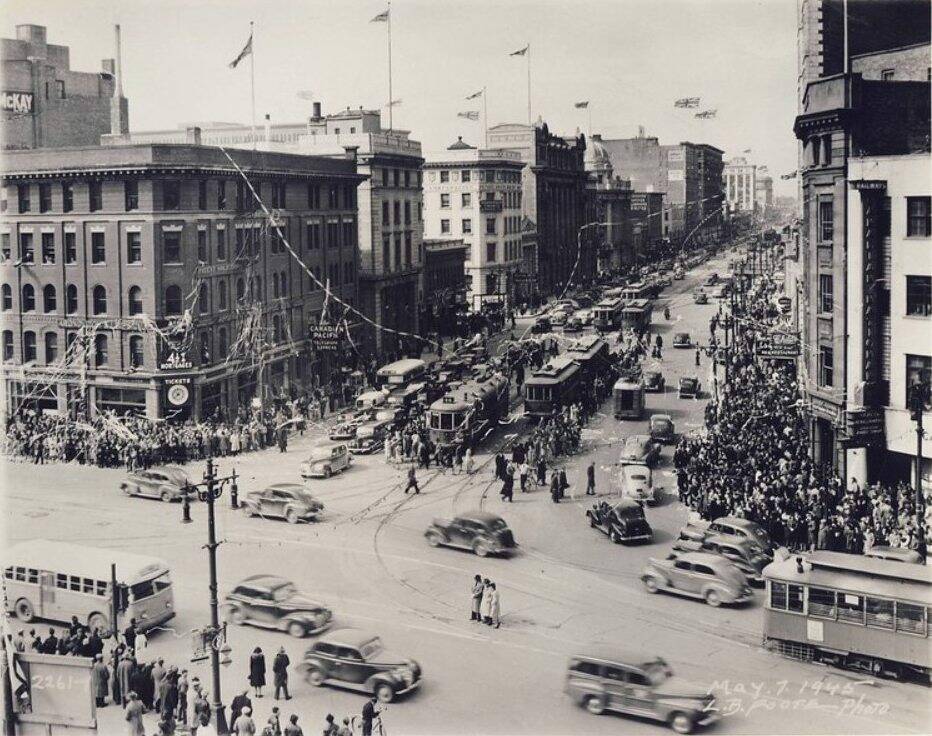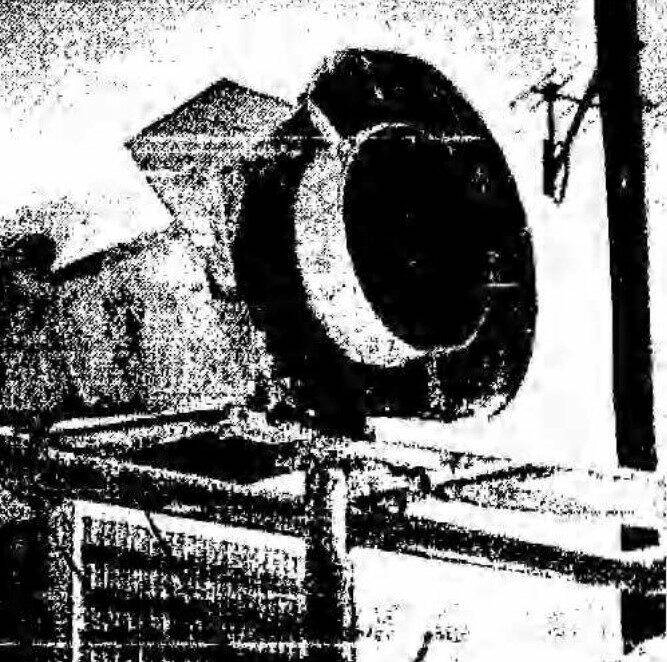Whistle signalled breaking news to Winnipeggers
Advertisement
Hey there, time traveller!
This article was published 05/02/2025 (301 days ago), so information in it may no longer be current.
In the days before television, radio, and the internet, the newspaper was the only way to get your daily news. Most major papers published morning and evening editions to keep readers as up-to-date as possible, but sometimes even that wasn’t enough.
The Winnipeg Free Press installed a three-tone steam whistle atop its Carlton Street building in 1917 that was said to be loud enough to be heard across the city. Its purpose was to relay important breaking news and to summon people to read more details posted on bulletin boards outside its premises.
The whistle’s first use was related to the December 1917 federal election. Readers were advised that the whistle would sound when the final results were in. If Robert Borden’s government was re-elected, it would be followed by a solid, 10-minute blast. If Laurier’s Liberals won, one-minute blasts at half-minute intervals would sound for ten minutes.

Free Press, Dec. 17, 1917
The first use of the Free Press whistle was to relay the 1917 federal election results.
The most important news signalled by the whistle was of the signing of the armistice that ended the First World War, but it got caught in an early example of “fake news”.
Most major news outlets across North America received an erroneous wire bulletin from the United Press on Nov. 7, 1918, stating that an armistice had been signed. The Free Press whistle sounded and a special edition of the paper was sent to press celebrating the end of the war on its front page.
When a peace deal again looked close to happening two days later, readers were advised that the whistle would only signal “authentic” news of the signing and that the wording would be posted outside the Free Press building once available. It, of course, sounded on Nov. 11, 1918.
The use of the whistle expanded over time. It signalled the New Year and the start of two minutes of silence on Remembrance Day each year. It was also used after a couple of major sports victories and it welcomed home an official motorcade from its round-trip journey to New Orleans on the ‘Palm to Pine’ Highway in February 1926.
The whistle was eventually replaced by an electronic siren. At its April 13, 1926 test run, a reporter noted that “for approximately two minutes the deep-throated, yet piercing roar echoed and re-echoed throughout the city.”

Archives of Manitoba, L.B. Collection
The siren atop the Winnipeg Free Press building signalled VE Day in May 1945, bringing thousands of people onto the streets to celebrate.
It was reported on May 7, 1945, that “thousands of Winnipeggers went mildly mad (this) morning when the scream of the Free Press siren officially announced that victory in Europe had been won.” It sounded again on Aug. 14, 1945, to signal the surrender of Japan and the end of the Second World War.
After the war, it appears the siren was used only to mark the beginning of Remembrance Day silences and to sound in the New Year. It was put on standby in 1950 to alert residents of major flood news and to prompt them to turn on their radios, but it is unclear if was ever used.
The last wail of the Free Press siren was on Jan. 1, 1974, when it heralded both the New Year and the beginning of Winnipeg’s centennial year celebrations.





